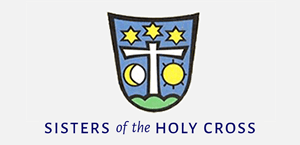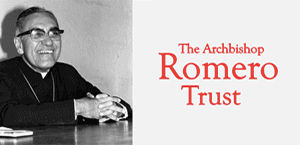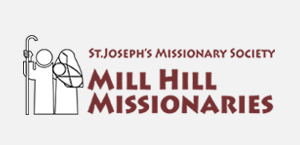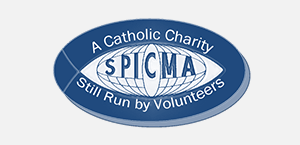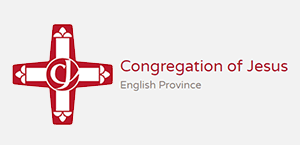Gospel in Art: Feast of Saints Phillip and James
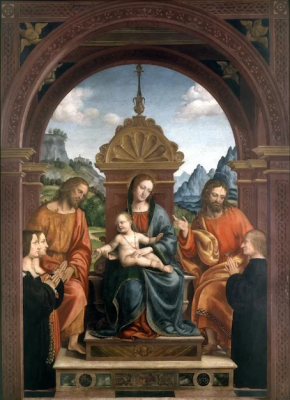
Madonna and Child, St James, St Philip and the Family of Antonio Busti, by Bernardo Zenale 1515 - 1518 © Brera Pinacoteca, Italy
Source: Christian Art
Gospel of 3 May 2024
John 14:6-14
Jesus said to Thomas:
'I am the Way, the Truth and the Life. No one can come to the Father except through me. If you know me, you know my Father too. From this moment you know him and have seen him.'
Philip said, 'Lord, let us see the Father and then we shall be satisfied.'
'Have I been with you all this time, Philip,' said Jesus to him 'and you still do not know me?
'To have seen me is to have seen the Father, so how can you say, "Let us see the Father"?
Do you not believe that I am in the Father and the Father is in me? The words I say to you I do not speak as from myself: it is the Father, living in me, who is doing this work.
You must believe me when I say that I am in the Father and the Father is in me; believe it on the evidence of this work, if for no other reason.
I tell you most solemnly, whoever believes in me will perform the same works as I do myself, he will perform even greater works, because I am going to the Father. Whatever you ask for in my name I will do, so that the Father may be glorified in the Son. If you ask for anything in my name, I will do it.'
Reflection on the painting
Today we celebrate the feast of Saint Philip the Apostle and Saint James the Less.
Saint Philip is mentioned several times in the New Testament, particularly in the Gospel of John, where he plays a significant role in bringing others to Jesus. He is known for his straightforward and practical nature, often asking direct questions or making straightforward statements. One of the most famous stories (other than today's reading) about Saint Philip is when he brought Nathanael to Jesus, declaring, "We have found the one Moses wrote about in the Law" (John 1:45). Jesus later called Philip to be one of his apostles, and Philip faithfully followed him throughout his ministry.
Saint James the Less, also known as James the Just or James, son of Alphaeus, was another of the Twelve Apostles chosen by Jesus. He is often referred to as "the Less" to distinguish him from James, the brother of John. Saint James played a prominent role in the early Christian community in Jerusalem and is traditionally believed to have been the author of the Epistle of James in the New Testament, which emphasises the importance of living out one's faith through good works.
The reason their feast day is celebrated together on May 3rd is rooted in the tradition that both saints were martyred on the same day in the same year, although the exact details of their deaths are not well documented. During the sixth century, the bodies of both saints were transferred from Constantinople to Rome by Pope Pelagius I (died in 561). They were laid to rest in the Basilica dei Santi XII Apostoli (The Twelve Holy Apostles). It is one of my favourite churches in Rome.
In our early 16th-century painting by Bernardo Zenale we see members of the Busti family who commissioned the painting, flanking the central scene of the Madonna and Child, with Saint Philip the Apostle and Saint James the Less. The altarpiece graced the chapel dedicated to the two saints in Santa Maria di Brera. Zenale was influenced by the style of Leonardo da Vinci, particularly in his use of sfumato, a technique of blending colours and tones to create soft transitions between areas of light and shadow.
LINKS
Gospel in Art: https://christian.art/
Today's Reflection: https://christian.art/daily-gospel-reading/john-14-6-14-2024/









